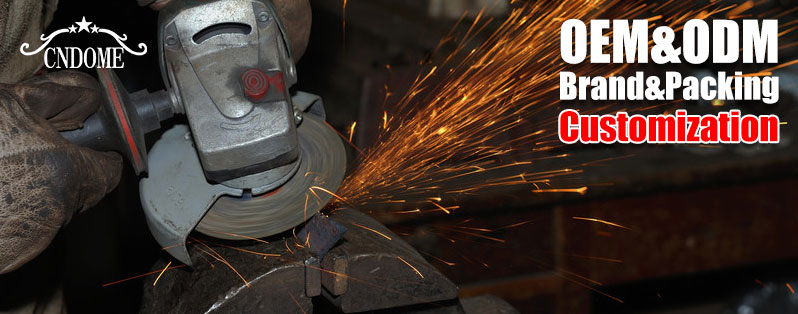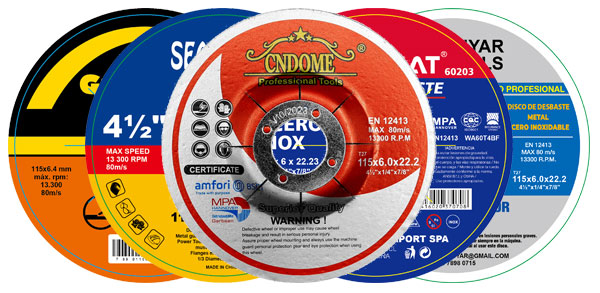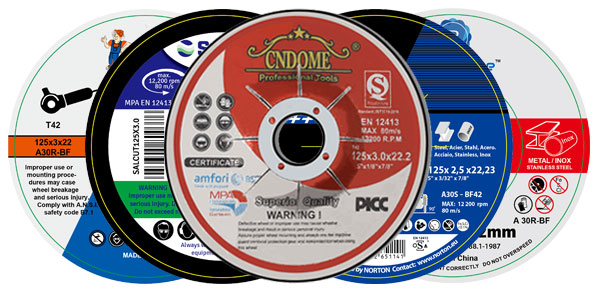Stainless steel is widely used for its corrosion resistance and aesthetic appeal, but grinding it can be challenging due to its hardness and tendency to overheat. Selecting the right grinding disc is critical for efficient work and to avoid damaging the metal. Here’s everything you need to know when choosing a grinding disc for stainless steel.
Material Compatibility
Stainless steel is sensitive to heat and can easily be ruined if improper tools are used. Standard grinding discs for steel or other metals often contain iron, sulfur, or chlorine, which can cause contamination and rusting on stainless steel. Therefore, it’s crucial to use discs that are specifically designed for stainless steel, free from contaminants, and marked as “Inox” rated.
Types of Grinding Discs for Stainless Steel
Flap Discs: These discs are ideal for fine finishing on stainless steel surfaces. They provide a balance of grinding efficiency and a smooth finish. Flap discs are made with coated abrasive flaps arranged in a fan shape, which allows for aggressive material removal while preventing excessive heat buildup.
Fibre Discs: Known for their efficiency in metalworking, fibre discs are often used for light to medium grinding tasks. They are ideal for weld removal, blending, and surface preparation on stainless steel. Opt for ceramic or zirconia-based fibre discs, as they last longer and grind faster than standard aluminum oxide discs.
Grinding Wheels: These are suited for heavy-duty material removal on stainless steel, such as weld grinding and deburring. Choose grinding wheels with high-quality abrasive grains like zirconia or ceramic, which maintain sharpness longer and resist overheating.
Cut-Off Discs: If you’re cutting through stainless steel rather than just grinding, specialized cut-off discs designed for stainless steel are essential. These thin discs are ideal for precise cuts without burrs or excess heat.
Abrasive Material
The abrasive material used in the grinding disc is critical to ensuring smooth and effective performance. For stainless steel, some of the most effective materials include:
- Zirconia Alumina: Known for its durability and fast cutting action, zirconia alumina discs work well for stainless steel. They offer longer service life and consistent grinding performance.
- Ceramic Alumina: Ceramic discs are excellent for aggressive grinding and finishing on hard materials like stainless steel. They stay sharper longer and require less pressure, reducing heat generation.
- Aluminum Oxide: While it’s the most common abrasive for general-purpose grinding, it is not the best for stainless steel. If you need to use aluminum oxide, ensure it’s labeled for use on stainless steel to avoid contamination.
Disc Size and Thickness
Grinding discs come in various sizes and thicknesses depending on the application. For stainless steel, thinner discs are generally preferred as they generate less heat and prevent material warping.
- 4.5-inch discs: Common for hand-held grinders, these discs offer versatility and control for grinding and finishing.
- 7-inch and 9-inch discs: Ideal for larger surface areas and heavy-duty grinding tasks, but they should be used with care to avoid heat-related damage to the stainless steel.
RPM and Speed Control
High-speed grinding can generate excessive heat, causing stainless steel to discolor or warp. To avoid this, select a disc that matches the RPM rating of your grinder. Some discs are designed for lower speeds to reduce heat buildup, which is especially important for stainless steel applications.
Tips for Grinding Stainless Steel
- Use light pressure: Excessive pressure can cause the disc to overheat and may damage the stainless steel surface. Let the abrasive grains do the work, applying only light pressure to guide the disc over the surface.
- Avoid overheating: Stainless steel is prone to thermal damage, which can lead to discoloration or warping. Use discs that dissipate heat effectively, and consider taking breaks between grinding passes to let the material cool down.
- Choose the right grit: The grit of the grinding disc will determine the finish on the stainless steel. Coarse grits (24-40) are ideal for fast material removal, while finer grits (60-120) are best for smooth finishing.
- Dressing the disc: Over time, the abrasive surface of a grinding disc may become clogged or dull. Using a dressing tool to restore the sharpness of the disc can ensure a longer lifespan and consistent grinding performance.
Safety Considerations
Grinding discs can wear down or shatter during use, so always wear appropriate personal protective equipment (PPE), including safety glasses, gloves, and hearing protection. Additionally, ensure your grinder has a safety guard and is in good working condition.
Conclusion
When it comes to grinding stainless steel, choosing the right disc can make a significant difference in the efficiency and quality of your work. Look for stainless steel-rated grinding discs with zirconia or ceramic abrasives, use the appropriate size and thickness, and pay attention to RPM and speed settings. By following these guidelines, you’ll achieve a smooth, clean finish without damaging the metal.



